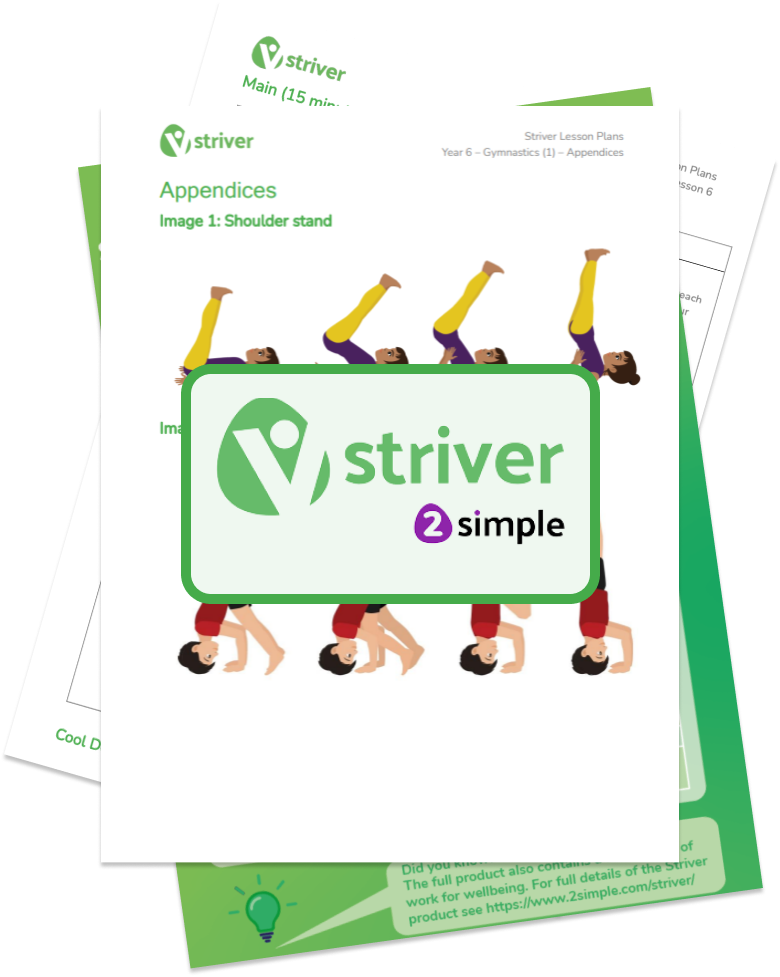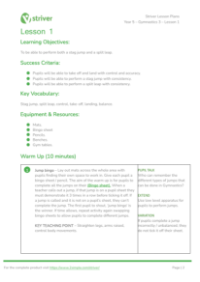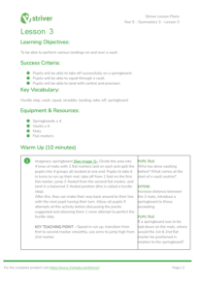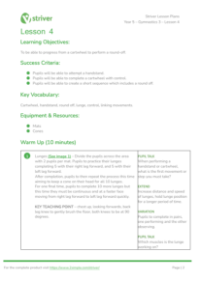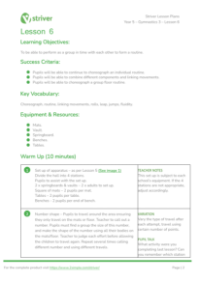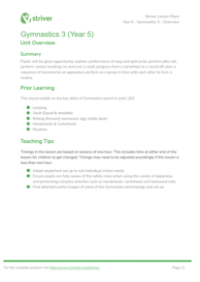Gymnastics 3 - Lesson 5
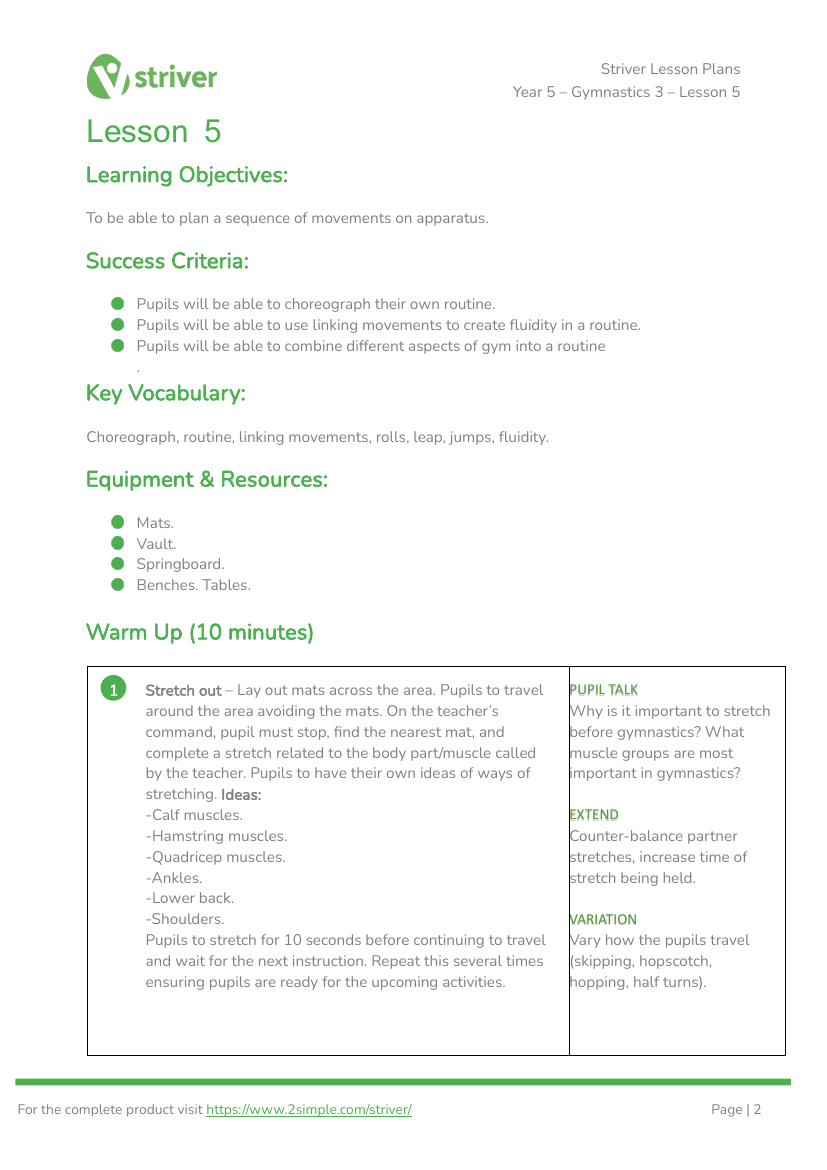
Physical Education Resource Description
In Year 5 Gymnastics lesson 5, students are encouraged to develop their gymnastic abilities by planning and executing a sequence of movements on apparatus. The lesson's primary learning objective is for pupils to choreograph their own routines, ensuring fluidity by using linking movements and combining various gymnastic elements. The success of the lesson is evaluated by the students' ability to create and perform their routines. Key vocabulary for the lesson includes choreograph, routine, linking movements, rolls, leap, jumps, and fluidity. The necessary equipment comprises mats, vaults, springboards, benches, and tables. The warm-up involves a dynamic stretching session where students travel around the area, avoiding mats, and perform stretches on command, focusing on different muscle groups such as calves, hamstrings, quadriceps, ankles, lower back, and shoulders. These stretches are essential for preparing the body for the upcoming gymnastic activities.
The main part of the lesson is divided into two activities. Firstly, students recap and practice previously learned skills, including handstands, cartwheels, round-offs, split leaps, stag jumps, various rolls, and vaulting techniques. This practice is self-paced, allowing students to refine their movements with control and precision. In the second activity, the hall is divided into four stations, and pupils are split into groups to choreograph short routines at two of these stations. Each station has specific instructions for the routine, incorporating runs, jumps, rolls, handstands, cartwheels, and linking movements. The routines are designed to be performed with control and fluidity, showcasing the pupils' ability to create flow between each gymnastic component. The lesson concludes with a cool-down where students assist in packing up the equipment and lead the class in stretches, reflecting on their performance and considering improvements for their next attempts at the routines.

